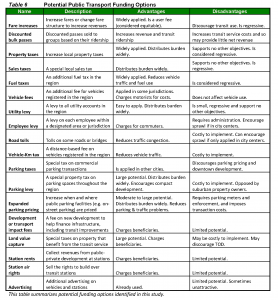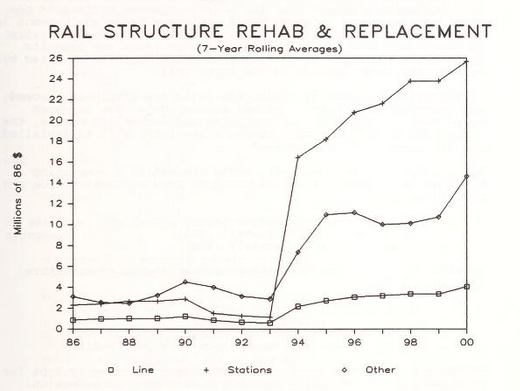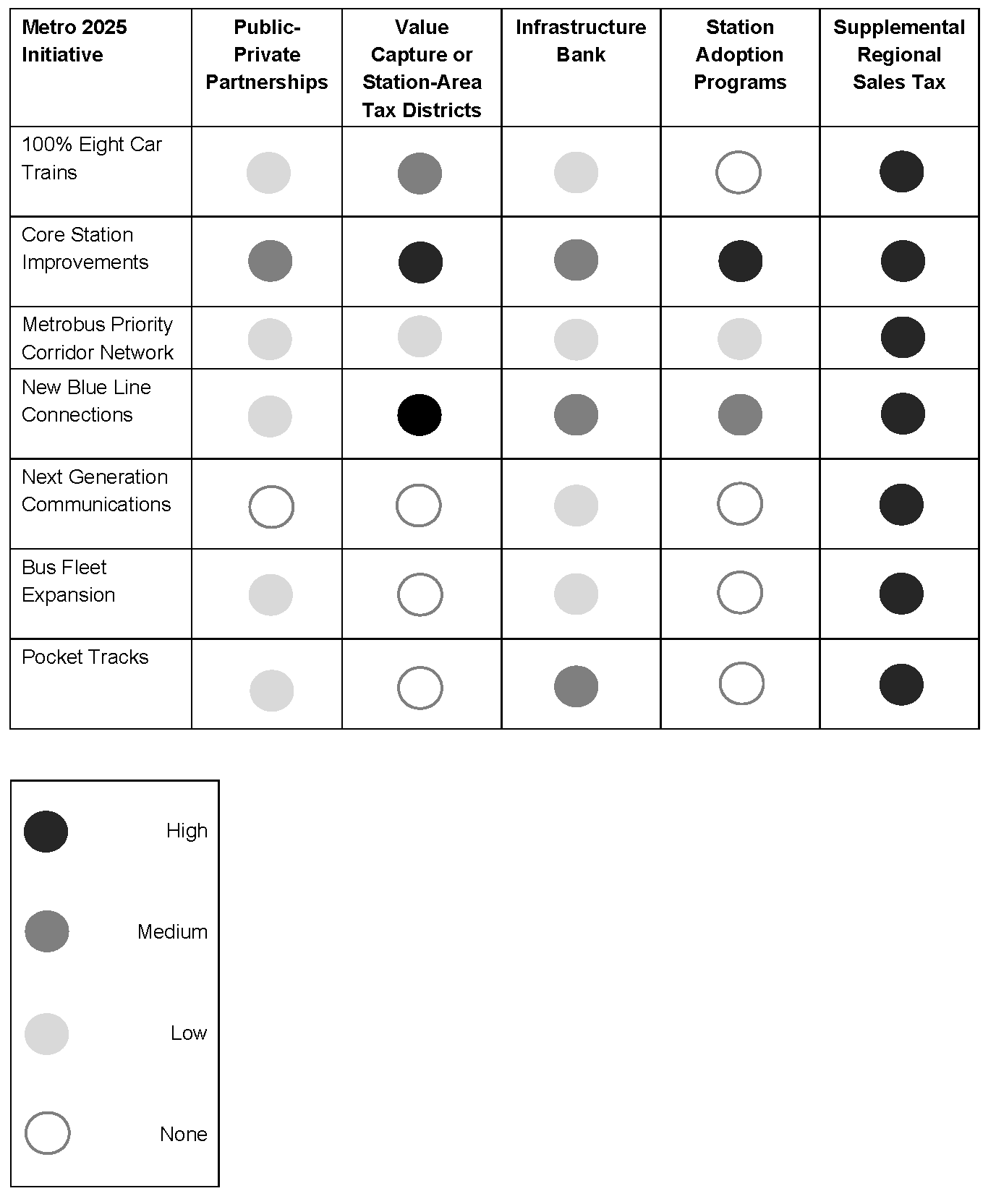Studies on Dedicated Funding for Metro – If We Had a Nickel…
The region has entered its 30th year of discussion about funding Metro.
There has been a lot of talk recently and even more sound bites about the need for more consistent, reliable, and dedicated funding for Metro. But while it may seem like an innovative topic, discussions about Metro’s funding challenges and the need for a dedicated funding stream for Metro have been going on for … decades. This has been an identified problem and heavily-studied topic since at least 1986 – the year the Oprah Winfrey Show debuted, Top Gun was the highest grossing film, and Ferris Bueller took a day off.
Truth be told, scores of very smart people have expended time and effort and resources to articulate the problems, accurately predict the consequences of inaction, and suggest solutions suitable (and necessary) for implementation. So when you read “news” about Metro’s funding challenges, the problems it creates, and potential fixes – remember that what you are reading is hardly “new”. And no refrain is older than the “it’s not the right time”, to which we must remind the reader that for three decades, it hasn’t been “the right time”. How’s that working out, anyway?
Below are a few of the studies and reports generated on Metro’s funding challenges and possible solutions to closing the funding gap:
- In 1986, while we were still building the Orange Line to Vienna, the Federal City Council completed a study that raised concerns about long-term maintenance costs of Metro, the impacts on the jurisdictions, and the tradeoffs between building out the Adopted Regional System and investing in maintenance. (WAMU’s Metropocalypse’s Podcast, Episode 5 provides a short summary on the importance of 1986 and this report, starting at 8:20.)
- In 2004, the year Metro Matters (pdf), a $3.3B funding agreement to address capital needs, was approved, the Brookings Institution authored Deficits by Design, which called attention to the annual funding crises brought about by its “problematic revenue base.”
- In 2005, the Metropolitan Washington Council of Governments, Federal City Council, and Greater Washington Board of Trade published the findings of the Metro Funding Panel, which recommended a Compact-wide increase in the sales tax of one half of one percent (0.50%).
- The Great Society Subway, published in 2006, outlines how Metro came to be and specifically speaks to the financial elements in Chapter 7. (Its author, Zachary Schrag, was interviewed in the Washingtonian in April 2016 and touches on dedicated funding as well.)
- In 2006, Metro’s 30th anniversary, the federal government followed the trend and commissioned a study by the General Accountability Office to understand the issues with providing a dedicated funding sources locally.
- In 2016, Metro’s 40th anniversary, the Metropolitan Washington Council of Governments (COG) and the Greater Washington Board of Trade (BOT) convene a set of meetings (“summits”) to discuss the future of Metro with a major focus on governance and funding.
Studying – check. So now what?
What are the funding options?
The Transportation Research Board (TRB) documented an array of local funding options for public transport, as did the Victoria Transport Policy Institute (VTPI). The region has a number of options that can be investigated to increase revenues (“funding”), which run the gamut of increasing fares and advertising to increasing property, fuel, and sales taxes to instituting station rents and capturing air rights, not to mention implementing road taxes (aka “congestion charging”).

VTPI Public Transit Funding Options and Their Advantages and Disadvantages. Click for a larger version.
What about an infrastructure bank or public private partnerships?
These aren’t funding options. They are financing mechanisms. As noted in an earlier PlanIt post, they don’t actually generate new revenue, but provide pathways for local and state governments to leverage funding or revenue sources. Many governments and other transit agencies use these methods to get the upfront cash needed for large projects by committing existing and future revenues. These can help Metro implement future capital projects, but they don’t answer the fundamental need for funding.
What are Metro’s options?
In 2014, Metro assessed a variety of financing mechanisms, and some funding options, when we looked at opportunities to implement Metro 2025. We also estimated the potential sales tax revenues of $177M – $702M per year based on a range of sales tax increase (0.25%-1%) by jurisdiction.

Potential Annual Revenue Estimates from Sales Tax via Creative Financing Paper, click for larger version
The Takeaways
(1) The discussions about Metro funding aren’t new. (2) There isn’t a silver bullet. (3) There are a wide variety of sources to fund operating and capital needs and some sources work better than others. (4) There is no “right time” to move beyond study to action.
What do you think is the best solution for funding Metro?




Good summary and timely one as well.
– The Northern Virginia Transportation Authority (NVTA) should be able to fund the contruction the New Blue Line Connection (New Rosslyn Station) in the next six year plan ($1.7 Billion available)
– It is still unclear why the D&G Pocket Track cannot be used in the near term for six car trains.
– Core Station Improvements can be mitigated by increased MARC and VRE service (New Long Bridge), K St Streetcar, Bike Share, and Bus Lanes.
– On the Virginia Side, a PRTC/NVTC Gas Tax increase and floor (http://lis.virginia.gov/cgi-bin/legp604.exe?ses=161&typ=bil&val=SB742) and the I-66 and I-395 HOT Lanes can help fund Bus transit expansion
Close it down.